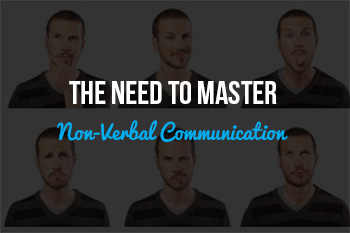Learning the Signs of Interest and Disinterest
5th Jan 2015
The Need to Master Non-Verbal Communication
 Communication is paramount when it comes to human interaction. Something that is as true of sexual attraction as it is of the rest. However, it is important to remember that much of human communication is non-verbal, meaning that no one can claim to communicate well without mastering such cues.
Communication is paramount when it comes to human interaction. Something that is as true of sexual attraction as it is of the rest. However, it is important to remember that much of human communication is non-verbal, meaning that no one can claim to communicate well without mastering such cues.
For people who take the time to master non-verbal cues, there are real benefits to be had. For example, being able to tell who is interested and who is not interested in a relationship can raise a person's chances of success at finding love. Likewise, being able to gauge the mood of the other person in no more than a single glance provides said individual with the means to stir their interaction in the right direction when it begins to wander. With that said, it is worth mentioning that these are but some of the benefits that can be had, though securing the rest is something that takes both time and practice.
Learning the Signs of Interest and Disinterest
Not all people out there share the same signs of interest and disinterest. However, here are some of the most common so that interested individuals can get started on mastering non-verbal cues:
- The smile is perhaps the single most obvious sign of interest, though it is important to remember that a smile can be faked. That said, there are some methods that can be used to tell if a smile is real or faked. For example, a real smile involves movement at the corners of both the mouth and the eyes, whereas a fake smile will leave the upper face unchanged most of the time. Likewise, if someone has a smile plastered on his or her face even before the start of interaction, there is a higher chance that said individual is faking it than if he or she had taken the time to read the situation and then responded with a smile.
- Checking out how someone is either sitting or standing is an excellent method for reading his or her current mood. In most cases, an open posture means that someone is comfortable with the situation, which is a big plus when it comes to capturing their interest. For example, someone with folded arms is showing care and caution, whereas if those same arms are at the same individual's sides, he or she is feeling relaxed. Likewise, someone with his or her torso turned towards someone else throughout the course of their interaction could be showing much the same feelings via his or her openness.
- How someone is positioned can reveal if said individual is interested in the interaction or not. In particular, leaning in is one of the most blatant signs of interest possible, though there are also other more subtle signs such as both hands and feet pointing towards the person of interest. Other small motions that can suggest interest range from frequent grooming to minor nervous gestures. Examples include but are not limited to brushing back hair, adjusting items of clothing, and even the biting of the lips.
- It is rather cliched to call the eyes the windows to the soul, but there is some truth to the statement. Maintaining eye contact is a sign of interest, whereas breaking eye contact to scan the surroundings on a regular basis is not. Bear in mind that someone who happens to be shy will seek eye contact, break it, and then seek eye contact once he or she regains confidence. Distinguishing shyness from a lack of interest should be a simple matter so long as a person is willing to take a little time to observe his or her counterpart.
- Touching is something that can reveal volumes about the situation. For example, someone either tensing up or even flinching upon contact is not interested in the situation, whereas someone who reciprocates is. That said, remember that some people can tense up because of surprise at the situation, meaning that it is important to observe their responses following the touch for a more complete understanding of the situation.

Contact Us
For individuals interested in improving their non-verbal communication, it is important to remember that not all people show the same responses under the same situations. In fact, this variation is part of the reason that interaction with others can be so rewarding.

